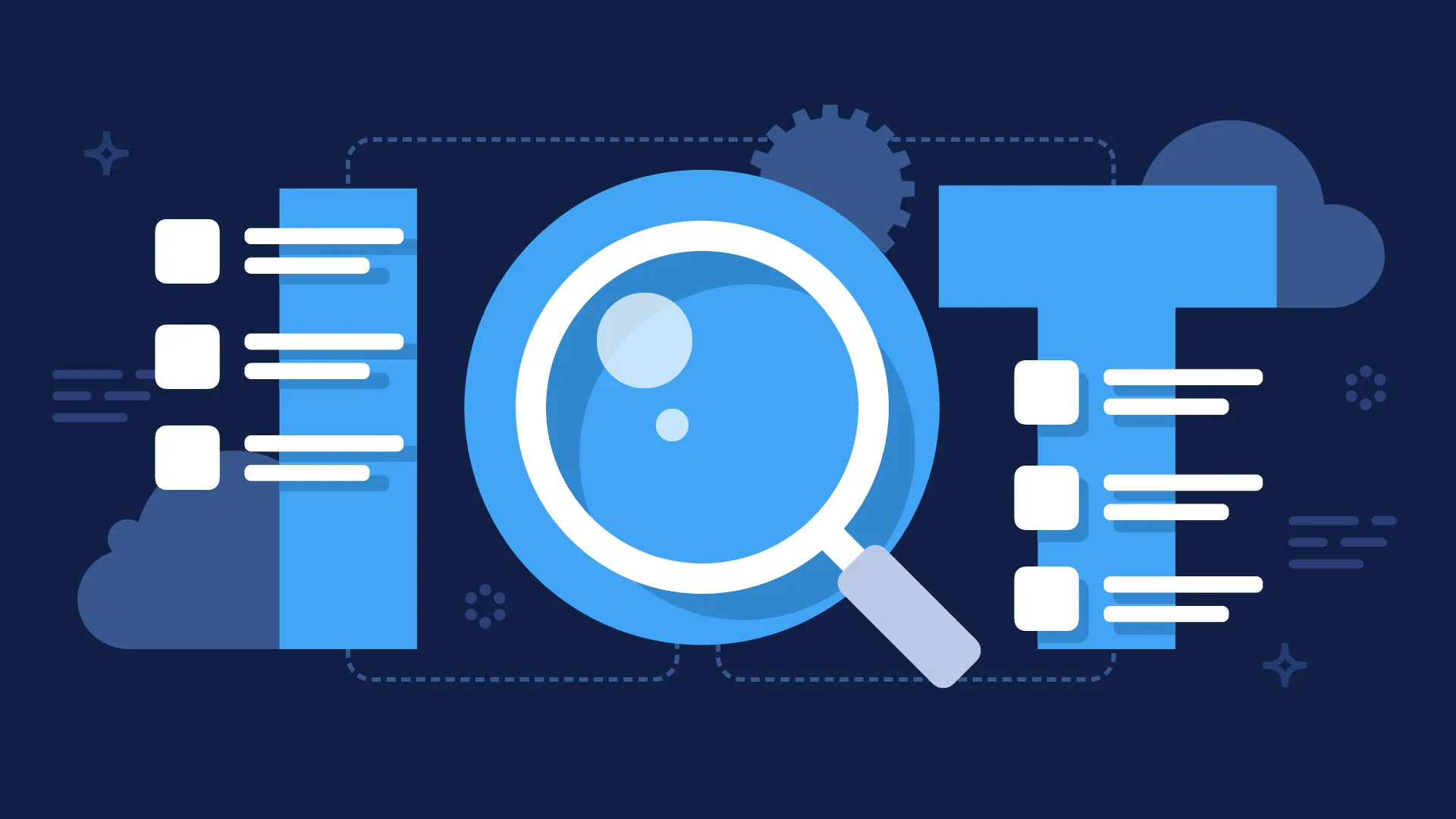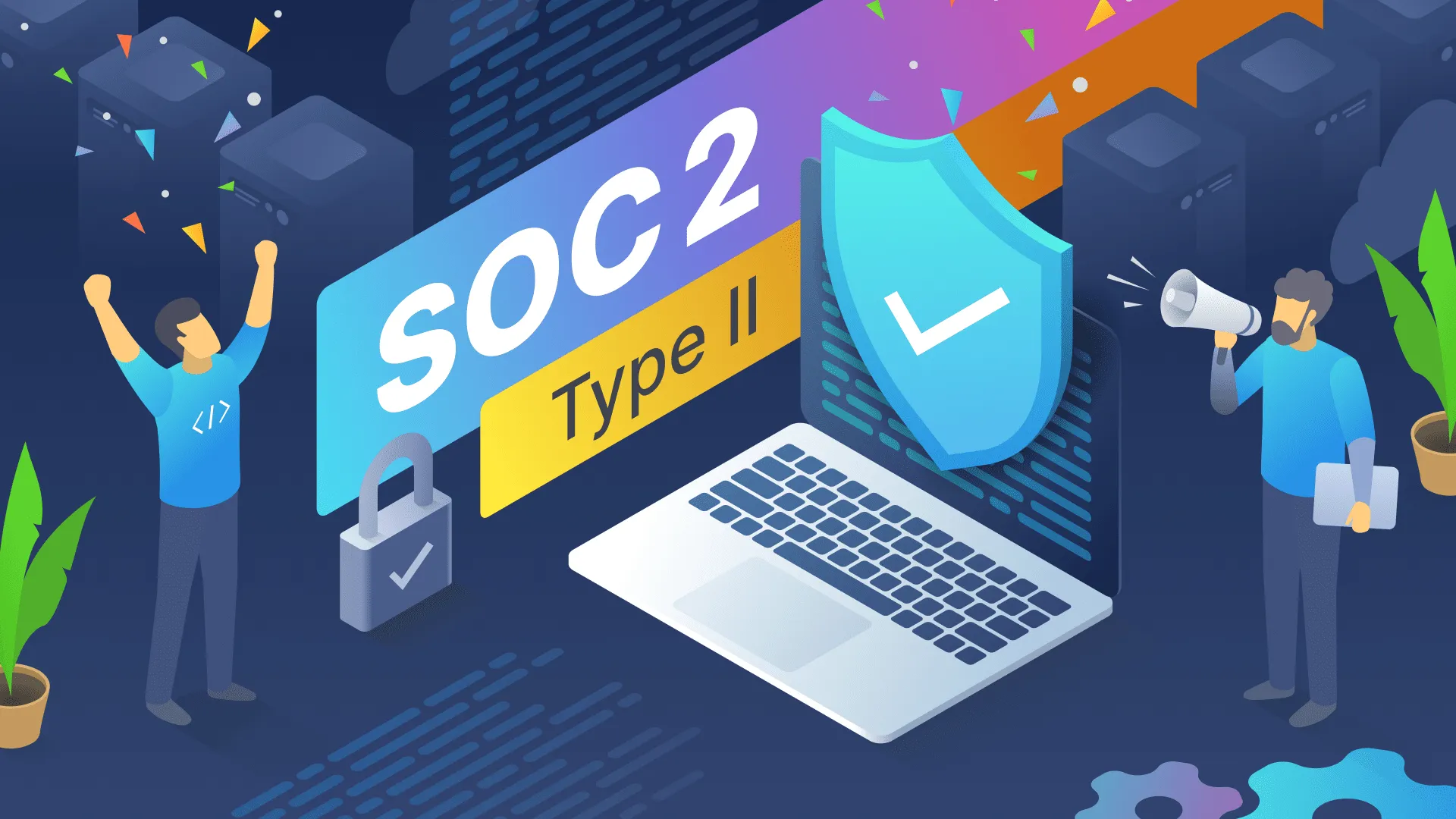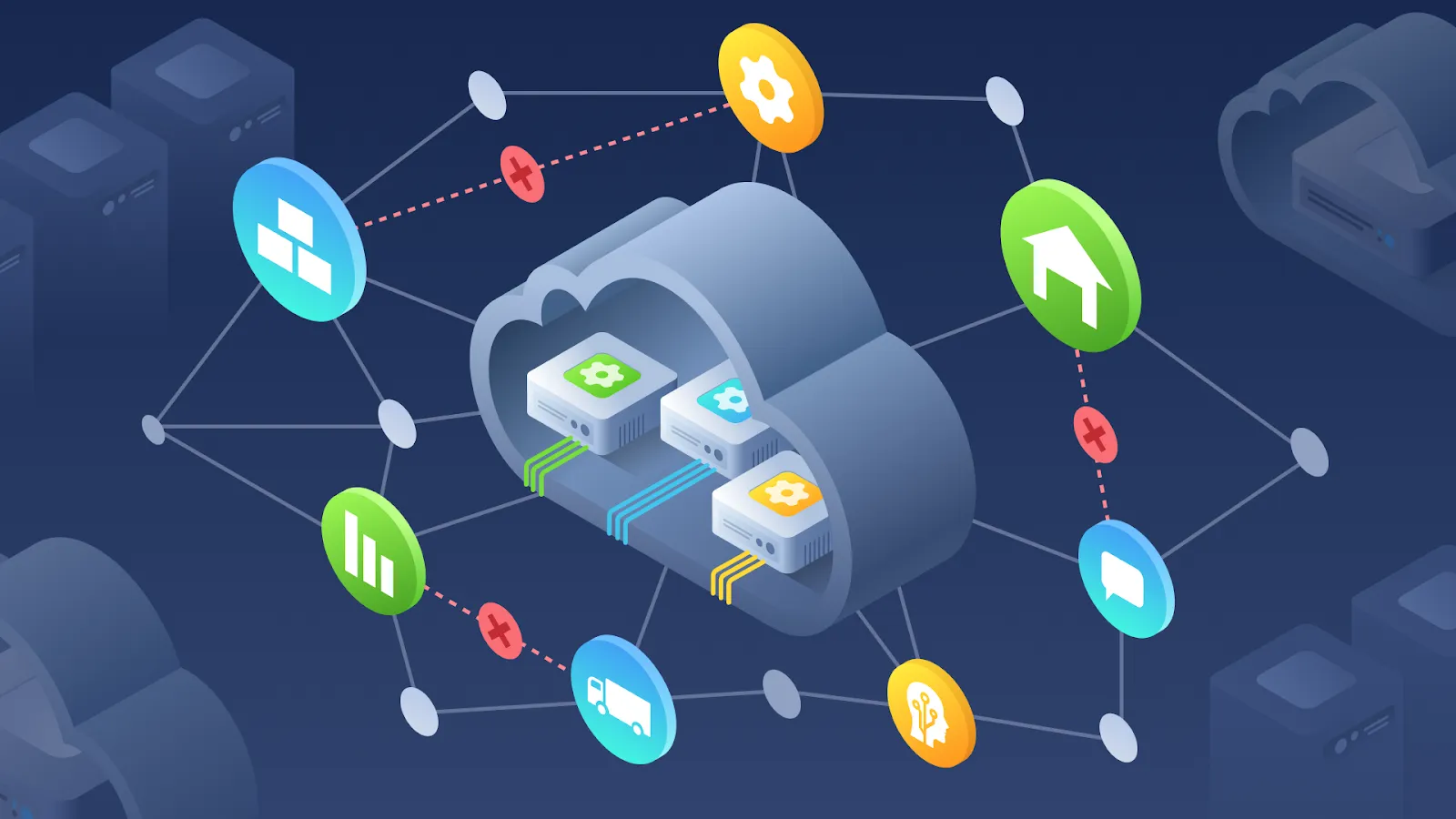During recent years, the Internet of Things (IoT) has shown significant growth as multiple IoT-enabled devices, cloud services, and applications have emerged. With the increase in their complexity, the demand for efficient IoT platforms that allow streamlining IoT application development is also growing. Markets and Markets research expects “the global IoT cloud platform market size to grow from USD 6.4 billion in 2020 to USD 11.5 billion by 2005, at a CAGR of 12.6% during the forecast period.”
Besides, similar dynamics are inherent to the number of IoT platform vendors. Many big companies from various industries have entered the competition intending to increase their share in the technology market. When selecting the best IoT platform for your organization, it is critical to analyze the total cost of ownership, the available feature sets, implementation speed, or usability. Ultimately, although a relevant IoT platform is generally great, it may not provide the most appropriate solutions for your business.
So what is an IoT platform and its major building blocks? What type of IoT platform does your business need? And how to choose the best option for your company? Read in our blog post.
What is an IoT platform?
An IoT platform serves as a set of cloud-based and/or on-premise software elements that organize the data movement between IoT-enabled devices and IoT applications. Also, they provide people with application-level capabilities for interacting with IoT systems. Often, IoT platforms are called middleware because it functions as a specific software bridge that connects the hardware and application layers.
But an IoT platform is not located in the middle of the IoT infrastructure. It integrates with other IoT layers for streamlining infrastructure management and supporting security at numerous points throughout the IoT stack. IoT platforms bring connectivity, integrality, and dynamic composability required for facilitating communication and information flow, managing devices, customizing a system and personalizing service. Thus, they provide users with controlled software tools that help unlock the potential of IoT infrastructure.
The main goal of IoT platforms is to eliminate the complexities in deploying and implementing IoT systems and bring actionable intelligence to IoT developers and service providers via dashboards, app software, APIs, data engines, or different algorithms. After all, IoT platforms abstract the hardware and, at the same time, simplify deployment, improve resiliency, maximize scalability, increase reliability, reduce cost, and minimize latency.
IoT platform building blocks
The core of IoT is connectivity, which allows IoT platforms to be as simple as software infrastructures that connect physical objects. Thanks to the increasing number of connected endpoints and IoT-enabled devices designed for performing complex tasks and providing sophisticated IoT service, the modern IoT market creates a high demand for platforms that can ensure real-time intelligence, machine-to-machine communication, cross-industry applications, and efficient end-to-end security.
If an IoT platform is more advanced, it can be equipped with different capabilities, including artificial intelligence (AI), machine learning (ML), or augmented reality (AR). These end-to-end IoT platforms traditionally consist of the following building blocks:
Connectivity. Connecting to and from IoT-enabled devices and IoT platforms is among the fundamental elements of the IoT architecture. With a connectivity layer, all IoT platforms gain a conduit for data acquisition, along with remote access and control. Today, when the IoT connectivity environment is massively fragmented, the effective management of multi-protocol, multi-layer, or multi-network connections serves as a crucial factor that helps achieve security, productivity, and flexibility.
Device management. Thanks to the device management module, IoT platforms obtain the efficient tool for streamlining secure and reliable management of IoT devices from the cloud platform. In addition, it can use cloud-side rules for initiating actions, creating customized command sets, and controlling device data in terms of volume, frequency, or destination.
Application enablement. The particular platform element provides application logic for сoordinating the handling of IoT device information, creating chains of conditional statements, and enabling the execution of “smart actions” with the help of sequence matching algorithms. This building block essentially enables action management to determine rules and triggers necessary to automate tasks and services. Finally, application enablement allows IoT developers to prototype, create, integrate, and customize unique apps.
Data management. This component corresponds to developing, executing, and supervising architectures, software, and disciplines used for controlling, protecting, delivering, and enhancing the value of data assets. Also, IoT data management can expand the traditional data management concept that includes relational-based data logging and offline storage, along with transaction management operations. Such expansion provides real-time information processing, analysis, visualization, and storage capabilities that are heterogeneous and streaming.
Cloud backend. Cloud solutions play a critical role in commercial IoT deployments due to their ability to handle large volumes of data and cost savings compared to on-premise infrastructures. Typically, it is possible to find IoT applications in Infrastructure as a Service (IaaS) business scenarios. That requires a cloud backend for streamlining data ingestion, storage, processing, analysis and orchestrating service, and managing security.
Security. This functional block within the IoT architecture allows for security, trust, privacy, and appropriate identity management throughout IoT-enabled devices, networks, and the cloud. But it may be increasingly challenging to create and maintain a holistic security model that can ensure end-to-end protection and struggle with numerous dynamic changes of IoT systems. After all, IoT platforms must protect data integrity and confidentiality via different features related to network security and privacy, including authentication, identification, or encryption.
What are the types of IoT platforms?
Nowadays, it is possible to segment the IoT platform market into various niches depending on the types of service offered to end-users. Thus, different industries have different middleware demands. In the case of industrial IoT (IIoT) customers, they are concerned with multiple features, functionalities, and capabilities that span all levels of the IoT. Such concerns can involve embedded software, tailored apps, device management, data management, or security.
Generally, there are six major types of commercial IoT platforms:
End-to-end platforms. These full-stack platforms use a one-size-fits-all approach that allows providing users with all necessary things for applying an efficient IoT system. It means that users obtain the required hardware, software, and other tools for connectivity and security that enable the fast implementation of IoT systems.
Connectivity management platforms. The particular type of IoT platform brings the software, connectivity hardware, and data to users required for managing and tracking IoT-enabled devices and networks. Such platforms ensure the efficient management and monitoring of connections and provide numerous additional tools, including real-time connectivity status.
Cloud storage platforms (IaaS). IoT cloud platforms provide clients with the infrastructure required for creating a coherent IoT system. They serve as central locations for storing data to which users link their backend processes. Among the most critical advantages of cloud storage platforms is their scalability.
Application enablement platforms. These flexible IoT solutions deliver an extensible middleware core that allows IoT developers to concentrate on market-specific IoT applications.
Device management platforms. With such IoT platforms, users can obtain devices, update software, upgrade firmware, patch security, control devices remotely, monitor and report on specific metrics regarding IoT assets.
Analytics platforms. The analytics platform functions as an analytics infrastructure used for running analytical apps, big data processing, or machine learning (ML) algorithms. Such platforms offer statistical and optimization tools for extracting valuable data to improve the client’s decision-making process.
Key IoT platforms overview
To help you decide which IoT platform will fit your project appropriately, we have created the list of the most popular IoT platforms for 2021 and described each one in detail.
1. AWS IoT
Description
Core features
Core use cases
AWS IoT offers device software and control, and data services. Device software allows connecting devices securely, gathering data, and taking intelligent actions locally, although Internet connectivity may not be available. Control services allow controlling, managing, and securing device fleets that are large and diverse. Finally, analytics services allow extracting value from IoT data.A variety of connection protocols such as MQTT, HTT, and LoRaWan
Integration with other AWS services (e.g., AWS Lambda) for building IoT applications
High-level security thanks to end-to-end encryption via each point of connection, automated configuration, and authentication
ML capabilities
Multiple services for edge computing
IIoT
Predictive maintenance
Remote operations monitoring
Asset tracking
Connected vehicles
Smart buildings
Health monitoring
2. Google Cloud IoT
Description
Core features
Core use cases
Google Cloud IoT serves as a complete set of tools for connecting, processing, storing, and analyzing data in the age and also in the cloud. This platform supports different embedded operating systems and provides full support for devices produced by leading manufacturers such as Intel and Microchip. It involves scalable, fully managed cloud services as well as an integrated software stack necessary for edge computing and ML capabilities.AI and ML capabilities
Real-time data analysis
Strong data visualization
Location tracking
Predictive maintenance
Asset tracking
Logistics and supply chain management
Smart cities and smart buildings
3. Microsoft Azure IoT
Description
Core features
Core use cases
Azure IoT provides a set of services and tools that allow: accelerating the creation of IoT technologies; customizing solution templates for typical IoT scenarios; extending intelligence from the cloud to edge devices; connecting, monitoring, and controlling millions of assets; creating digital models of the company’s physical spaces and assets; exploring and gaining real-time insights from IoT data; building and connecting MCU-powered devices.Data protection during the entire way from the edge to the cloud
The ability to perform even offline thanks to Azure IoT edge
Integration with other Azure services
AI solutions
Ongoing cloud-scale analytics
Full managed databases
IIoT solutions
Automotive industry
Discrete manufacturing
Energy sector
Healthcare
Transportation and logistics
Retail
4. Salesforce IoT
Description
Core features
Core use cases
The Salesforce IoT Cloud platform allows gathering valuable data from connected devices for delivering personalized experiences and building strong relationships with the company’s clients. The platform works together with Salesforce CRM: the connected devices deliver information directly to the CRM system, which initiates context-based actions immediately.Full integration of clients, products, and CRM
No programming skills are required for creating rules, conditions, and events thanks to a simple point-and-click UI
Compatible with third-party websites or services
A proactive approach to solving customer issues and satisfying needs
Government agencies
Machinery
Financial services
Marketing and advertising
5. Oracle IoT
Description
Core features
Core use cases
Oracle IoT is considered a secure and scalable platform that helps companies create and deploy IoT applications quickly and allows capturing and analyzing their IoT data fully. This platform offers ready-to-use IoT SaaS solutions for many sectors, including Industry 4.0, smart manufacturing, or remote asset maintenance, and so on. Oracle IoT enables companies to achieve their vision regarding their digital transformation.The ability to build apps and connect them to different devices with JS, Java, iOS, Android, or REST APIs
Integration with enterprise apps, web services, or other critical Oracle Cloud services
Efficient analysis tools for aggregating and filtering incoming data streams in real-time
All devices have unique digital identities for establishing trust relationships between them and apps
Logistics and transportation
Predictive maintenance
Smart factories
Workplace safety
6. Cisco Kinetic IoT
Description
Core features
Core use cases
Cisco Kinetic serves as a distributed software system used for streamlining IoT operations. This platform performs three key functions - it extracts, normalizes, and securely moves data from IoT-enabled devices to distributed applications. Cisco Kinetic consists of three modules that work together and allow connecting devices securely and then extracting, computing, and moving your IoT data.Powerful industrial solutions
High-quality security
Edge computing
Centralized connectivity and data management
Connected vehicles
Fleet management
Payment and POS solutions
Manufacturing
Predictive maintenance
Industrial networking
Healthcare
Smart cities
7. IBM Watson IoT
Description
Core features
Core use cases
Watson IoT platform is considered an end-to-end, fully managed cloud service that allows integrating preselected services to create a public SaaS solution on the IBM Cloud framework. The platform offers multiple built-in and add-on tools for processing IoT data in real-time, extracting KPIs from data, and securely connecting your apps and tools to the relevant infrastructure.Data ingestion from all sources thanks to MQTT
Direct access to the newest information in the Cloudant NoSQL solution
The ability to control assets thanks to built-in monitoring dashboards
Analytics service for processing raw metrics
The available Cloud Object Storage solution to archive long-term data
Supply chain management
Facility management
Shipping and logistics
Energy consumption
8. Particle
Description
Core features
Core use cases
Particle serves as a fully integrated IoT platform that provides everything necessary for building an IoT device. The particular platform has development boards with microcontrollers used for connecting devices to the Internet and development tools that allow programming the firmware. After all, thanks to the Particle device, companies can obtain control over all their devices.The ability to integrate with third-party services through REST API
Firewall-protected cloud
The ability to work with information from Google Cloud or Microsoft Azure
No need to have technical skills for using the platform
Real-time asset tracking
Vehicle tracking
Predictive maintenance
Environmental monitoring
Real-time order fulfillment
9. Telit
Description
Core features
Core use cases
Telit IoT platform offers pre-built device drivers and tools for developing, deploying, and managing complex multi-point IoT solutions. This platform makes it possible for development teams to focus on creating apps, not infrastructure, which makes systems cooperate for satisfying customer needs. Telit provides teams with total flexibility in how information is collected, where it is transferred, and how their IoT solutions respond to this information.Ultra security
Data centricity
Multiple IoT applications in different industries, including agriculture
Powerful edge capabilities
Healthcare
Logistics and transportation
Energy consumption
Connected vehicles
Public transportation
Environmental monitoring
IIoT
Asset tracking
How to choose the best-fitting IoT platform?
The analysis of the key IoT platforms proves the fact that there are multiple options to choose from. Thus, it can be a challenging task to find the best-fitting solution to satisfy your project needs. Whatever IoT platform you choose, all platforms are described in this article because they all offer multiple advantages your organization can benefit from.
Here we provide some criteria that can help you choose the best solution for your project:
Supported hardware and software platforms. Companies should select IoT platforms that can run on multiple gateways and specialized devices. Such platforms should also provide a unified software platform to efficiently manage a fleet of heterogeneous devices.
Supported protocols (MQTT). MQTT serves as a standard publish/subscribe protocol that embedded devices use and support frequently. Besides, the particular protocol is crucial for machine-to-machine interactions. Many popular IoT platforms, including IBM Watson IoT and AWS IoT, use MQTT as the fundamental for their services.
Security and compliance. Reviewing IoT platforms that specialize in device management in terms of security solutions they provide is necessary to choose an IoT platform. Also, you have to pay attention to the available functionalities like over-the-air software upgrades (SOTA) and secure DTLS data encryption which have transformed from simple conveniences to must-haves.
What about compliance, there is a need to meet with your regulatory and quality assurance teams for understanding any restrictions or mandates and documenting relevant requirements before starting the project.
Price and pricing model. Several platforms like AWS IoT use a pay-per-use model. Meanwhile, others prefer a monthly subscription model when you have to pay a fixed price regularly (for example, Salesforce). You can choose the appropriate pricing model depending on your project features.
Free trial. The particular option brings many benefits in the cases when you have to test something. Thus, you can start a simple project having minimal investments. For instance, AWS IOT offers a free trial option that has certain limitations, while many other vendors do not provide any because the particular tool is quite expensive.
Team collaboration. Discussing the pros and cons of IoT platforms with developers is an effective approach to selecting the proper tools and services. Your development team can share its expertise and experience regarding the available options. That will help make the right decision, maintaining the necessary balance between project requirements and developers.
To conclude, although IoT platforms share many similarities, they also have dramatic differences in terms of their end-user profile. That is why selecting the best-fitting IoT platform depends on your specific use case, the development team’s size, and budget. After all, to find the most suitable environment for creating a connected network, you should request some professional assistance.




